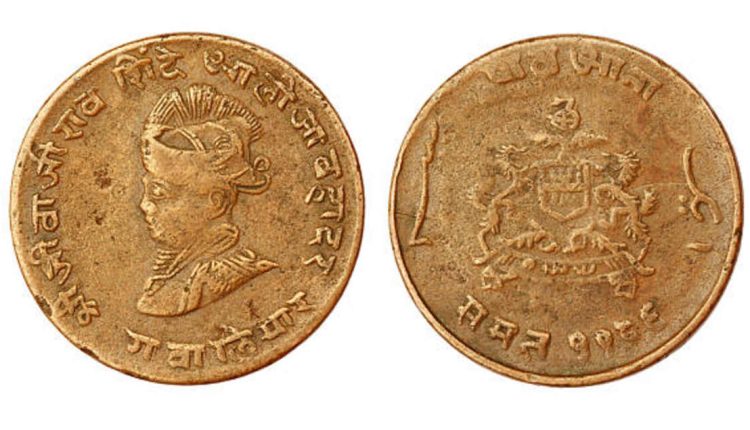East India Company Coins
East India Company coins capture moments in history that both contemporary enthusiasts and future generations can cherish for decades to come. Crafted using cutting-edge engraving technology and minting processes, these precious mementos of history will remain treasures.
King Charles II granted the East India Company permission to mint coins in its overseas territories, leading them to establish more than 14 mints across India – such as in Bombay, Calcutta, and Madras.
History
Gold coins have long been seen as the symbol of wealth and power, reflecting this image when first issued by the Dutch East India Company (Voordeenigde Oostindische Compagnie or VOC in 1602). This bronze token from VOC encapsulated such wealth and authority when first produced for circulation in 1602.
The British East India Company quickly rose to become one of Asia’s major trading powers by establishing factory bases throughout Asia and forging strong ties with various Indian rulers, ultimately becoming a trading monopoly for India. Their Indian territories were administered through three British presidencies of Madras, Bombay, and Calcutta, which each issued their coinage until 1835, when a standard silver rupee became legal tender across all British India territories.
This coin bears the VOC monogram and date on one side, while its reverse side displays a ship sailing the seas. As a testament to VOC’s dominance in trade, its denomination side reads “1 DUIT”. Crafted of copper with an attractive patina finish and wear-and-tear details that add character and appeal, this copper I coin stands as an essential reminder of India’s long history with VOC – making an excellent collectible and gift item! This coin will make a wonderful keepsake that’s sure to impress both collectors and history buffs!
Design
Relic of an age when the British East India Company dominated world trade, this set of six one-rupee coins from India is an intriguing piece of history. Dating both pre-1835 EIC coinage as well as coins struck after EIC became an Imperial entity – featuring Queen Victoria portraits – this remarkable set is sure to take your breath away!
In the seventeenth century, a copper doit (Dutch for penny) was issued by the Netherlands East India Company with its monogram and date of minting engraved on one side, while its reverse bears the Dutch coat of arms etched into it.
After the breakup of the Mughal Empire, EIC began striking European-style coins in India, but these weren’t well received by traders or governments. Due to increasing trade volumes and an effort to establish standard currencies for currency transactions, they reestablished India-specific coinage issues instead.
Early Indian coinage was produced in various denominations by Madras, Bombay, and Bengal Presidency mints in varying denominations until 1835 when a uniform coinage system was implemented across all Indian territories. Calcutta mint coins can be identified by a raised or incused “C” below their date; Bombay and Madras mint coins feature two dots either above or below the top flower on their reverse. This set contains 1862 coins from each mint.
Metal
As part of its trade monopoly in India, the Company used its trade monopoly to mint coinage. At first, this coinage consisted of gold Mohurs and silver rupees, but as needs grew, they began minting copper coins that were initially produced at Surat before later the Bombay Presidency mint (now Mumbai) had European-style coins.
These coins boast a beautiful patina, making them an invaluable addition to any collection. On one side stands Raphael Maklouf’s portrait of Queen Elizabeth II by Raphael Maklouf; on the reverse is its value written out in Persian with a laurel wreath and mintmark dot above the central legend; the mintmark dot located above the prominent legend.
Quarter anna coins from various mints of India can be distinguished based on several factors, including their diameter. According to Pridmore, the diameter can provide a faster way of identifying their mint of origin than privy marks found on them; coins with diameters 31.1-31.4 mm likely originate in Calcutta, while those 31.6-31.7 mm possibly hail from Bombay while coins 31.8-32.3 mm typically hail from Madras.
Other indicators of mints include diacritical marks in Persian legends and whether there is a stop within them; additionally, there may be differences in the shading of buckle edges as well as oblique milling above legends, which provide additional indicators.
Value
The East India Company was one of the foremost bullion traders of its day and issued its trading currency, making its coins highly sought after among collectors and enthusiasts. Their coins reflected powerful economic and cultural forces at play in India – making them prized possessions.
Queen Elizabeth I granted the company a royal charter from Queen Elizabeth in 1600, giving it a trade monopoly between eastern countries and India. They established mints in Madras, Bombay, and Calcutta to mint European-style coins to use in trade with Indian partners – also minting gold mohurs and silver rupees for themselves!
After the Indian Mutiny of 1857, all governmental responsibilities that had previously fallen to the Company were assumed by the crown, and its 24,000-man military force was integrated into the British army. In 1874, however, the Company itself was disbanded as it had no more governmental responsibilities to fulfill.
These copper duit coins of the Dutch East India Company stand as a testament to its power and influence during the 17th century. Each one features the VOC monogram and date of production on one side, while its reverse features the Dutch coat of arms – an invaluable piece of history and sure to spark conversations for years. Limited worldwide to only 100 pieces – so grab one today before they all sell out!


